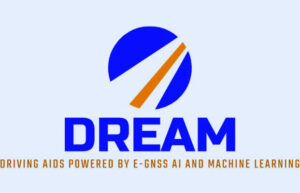This month we have successfully completed the preliminary design of the DREAM (Driving-aids powered by E-GNSS, AI & Machine Learning) project.
DREAM is a project coordinated by EUSPA – EU Agency for the Space Programme that is aimed to design and develop innovative Artificial Intelligence and Machine Learning techniques powering positioning and environment perception technologies to support the generation of driving aids for buses.
The system that is being designed and developed in this project includes the following main features:
- Highly Accurate and Resilient Position and Attitude Determination System: Leveraging a variety of sensors including GNSS, Galileo differentiators (High Accuracy and OSNMA services), inertial sensors, odometers, lidar, and cameras.
- 3D Bounding Boxes for Surrounding Objects: Offering detailed information about object dynamics for improved safety measures.
- Traffic Light Detection and Classification: Enhancing situational awareness for better decision-making.
- Mapping System: Utilizing cameras and lidars to generate 3D maps (based on point clouds) and RGB maps. These maps aid in re-localization (3D maps) and lane detection (RGB).
In the PDR milestone, EUSPA and ANavS agreed on the final set of user and system requirements. An initial review of the system was conducted, with very interesting discussions on the SW algorithms (e.g. Lidar- and Visual- SLAM algorithms, high accuracy positioning filter leveraging on Galileo HAS and OSNMA, object detection and HD maps generation) and HW components comprising the system. The system design will be further refined in the coming months and consolidated at the CDR milestone foreseen for beginning of September. During the PDR, the proposed business plan was review in detail, with some useful ideas and suggestions from improvement.
All further information on the project can be found here.
